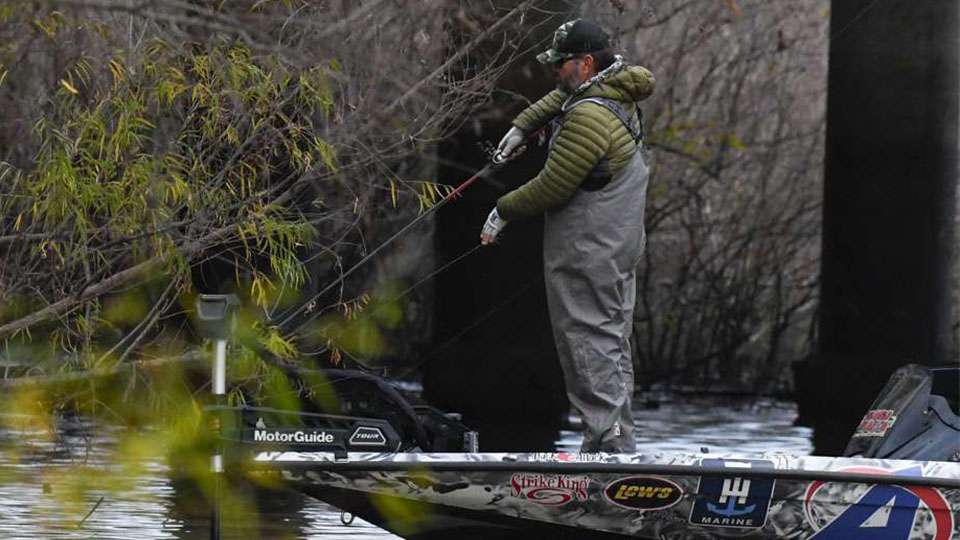
For tournament anglers, there are a number of intervening conditions that can turn a good bite sour. Louisiana pro Greg Hackney doesn’t sugarcoat it: “Cold, muddy water is by far the worst set of conditions you can fish,” he says.
Unfortunately, many anglers don’t get to choose the ideal conditions to fish in. If you’re a 9-to-5 working guy, Saturday is your day on the water and the tournament directors aren’t going to reschedule just because there’s a cold front and muddy water flowing into the lake.
Hackney says that this is one situation where it’s possible to take lemons and make lemonade.
“Fishing is tough, but one thing that cold, muddy water normally does is push the fish up shallow,” he advises. “They’re more cover-oriented, and they’ll be about as shallow as they can get. They don’t like it either, so they’re going to look for a comfort zone, which is shallower.”
Normally, this is most relevant in the early part of the year — January, February and March. “That’s the time of year that it happens and it’ll put the fish ‘in the dirt’ — in shallow water, 2 feet or less. In fact, 2 feet is deep in that situation,” Hackney continues.
While one key is to slow down, Hackney has found that a jig or worm crawled slowly through the cover is often not the best choice.
“Those fish are very inactive in cold, muddy water, so you need something that will aggravate them into biting. That’s the reason I don’t like a jig or a bottom bait — I want something with a lot of ‘thump,’ ” he says. “They’re not actively feeding.”
“The main thing is to fish big baits and dark colors,” he continues. “I grew up in an area where we have those conditions every spring. One of my best baits in cold, muddy water is a Redfish Magic, which is basically a safety pin spinnerbait. The spinner harness is clipped to the jighead. It has twice as much vibration as any single-spin Colorado blade out there today. You can reel it at a really slow speed. It hasn’t lined up yet to win a national tournament, but it is going to. It is made for cold, muddy water.”
His preferred color pattern involves a black-and-chartreuse skirt. He usually reels it steadily, making repeated casts to isolated pieces of cover.
“It’s a bait that I can continue to put on a piece of cover where I think a fish should be and basically aggravate it into biting,” he says, noting that he doesn’t tend to get in a hurry. “You’re often fishing for just three to five bites a day.”
Once he gets a bite or two, the bass tell him what his next move should be. A run-of-the-mill 12-incher doesn’t help him narrow down a pattern, but if he ties into a fat prespawn fish, “I’ll tear that area apart,” he explains.
Hackney points to the first year BASS visited Clarks Hill (Ga./S.C.) as an example of when he last caught quality bass in rapidly declining conditions. “I found some key fish in an area where the cold, muddy water had pushed the baitfish up shallow,” he remembers. “I was basically casting into the dirt.”
When looking for ultraskinny water, it can pay to think in an unorthodox fashion. At the 2008 Bassmaster Classic he found some fish on this type of bite, although he ended up not going after them during the event. But if it had panned out, he would have had them all to himself. “You don’t even necessarily have to have deep water close by because they will move out as far away from that stuff as possible,” he advises.
Fishing cold, muddy water is not a desirable situation to find yourself in, but it’s no reason to throw in the towel, either. Pick up the big stick, head shallow and thump some bass.
Editor’s Note: Article was originally published in January, 2011.
(Provided exclusively to BASS Insider by Z3 Media)





